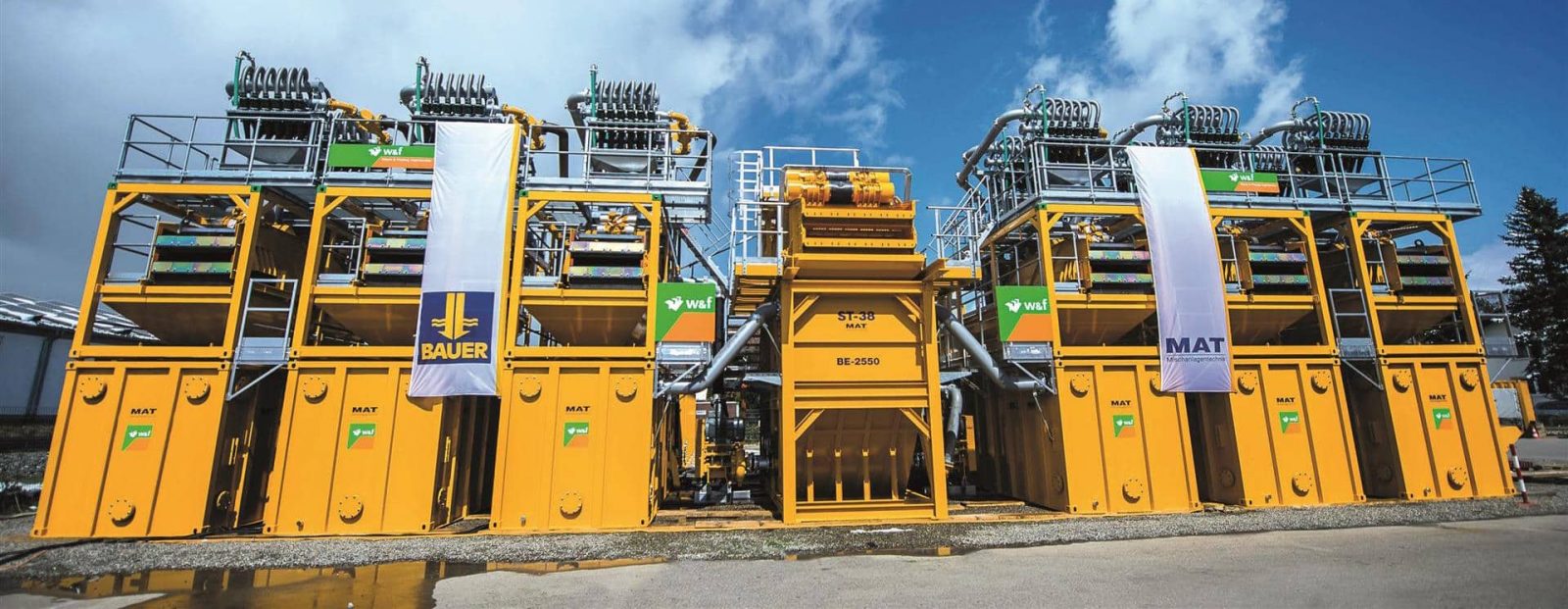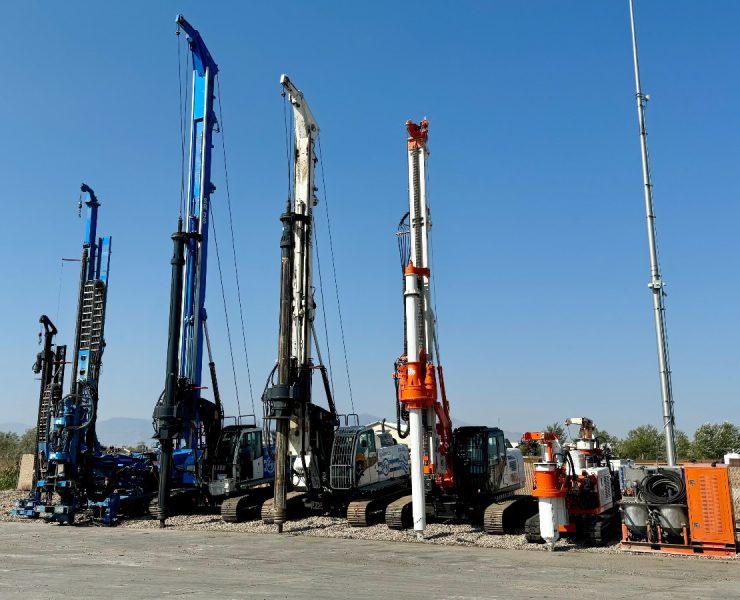A New Dimension in Separation Technology

Canton of Solothurn, Switzerland – State-of-the-art mixing and separation technology for more than 25 years now, with the best possible prospects of success even in complex and challenging projects – this is what MAT Mischanlagentechnik stands for. As part of the major Eppenberg Tunnel Project in the Swiss Canton of Solothurn, BAUER Maschinen GmbH’s subsidiary presented the next level of its tried-and-tested separating plants for the first time: the BE-2550. The BE-2550 marks the entry of this mid-sized company, located in Immenstadt im Allgäu, into the large-diameter tunneling project market, after more than 20 years of experience in microtunneling.
The double-track Eppenberg Tunnel is about 2.6 km long This tunnel is at the heart of the four-line expansion of the railway line on the Olten-Aarau route, which is the busiest railway route in Switzerland. This is a key project for railway traffic in the Swiss Central Plateau region as well as for the entire country. The expansion of the main arterial line will open up options not only for the regional railway network but for long-distance travel as well – the Swiss Federal Railways is planning inter-city trains between Bern and Zurich at quarter-hourly intervals during peak hours.

Since November 2016, a 2,400-t heavy-weight tunnel boring machine measuring 115 m in length and 12.75 m in diameter has been drilling through the mountain. The machine has been operating in the open mode (hard rock) until now; for the remaining 700 m, the fluid-supported “slurry” technology will be used (unconsolidated rock). Since August 7, MAT Mischanlagentechnik has been using its state-of-the-art separating plant, the BE-2550, for the last and crucial section of the Eppenberg tunnel – thereby making a vital contribution to the breaking through of the tunnel at the arrival point in Gretzenbach, which is due to take place this winter.
The BE-2550 is made up of six adjoining identical standalone plants of type BE-425-60, and adds a completely new dimension to separation technology. 2,400 m³ of slurry is moved per hour in a closed circuit system. In specific terms, the bentonite slurry transports the excavated material continuously to the separating plant via a 3-km-long pipeline. In the separation plant, the bentonite slurry is separated from the soil in multiple process stages using screens and hydrocyclone. Thereafter it is once again fed into the slurry circuit and delivered to the TBM cutter head. Two SKC-60-K continuous mixing plants ensure continuous production of bentonite slurry.

For MAT Mischanlagentechnik, the BE-2550, with a length of 22 m and width of 26 m, is not just a new model that sets new standards in terms of size; the separating plant also paves the way for a new line of business for the company from Immenstadt. Additionally, the fact that the highly complex technical and logistical challenges encountered in this project could be overcome in a timely and professional manner is undoubtedly a big success. “It is the result of perfect teamwork within the entire project team,” comment the project managers, Kurt Ostermeier and Kathrin Solbach (both Bauer).
Adhering to the tight schedule requested by the customer meant that the different business divisions across the company and the departments needed to be in perfect synergy. Precise design, accuracy in manufacturing, and a highly qualified team comprising of mechanics and electricians all went into creating the BE-2550 in the company’s own workshops. Logistics was also a crucial success factor. On site, all necessary tools, machine components, and construction site equipment, as well as qualified personnel had to be in the right place at the right time for assembly and commissioning. From factory acceptance testing in Immenstadt, where 25 trucks were loaded in just five working days, to commissioning in Switzerland, where every truck arrived at the construction site on the dot – this is logistical excellence, which requires a considerable amount of experience.

















